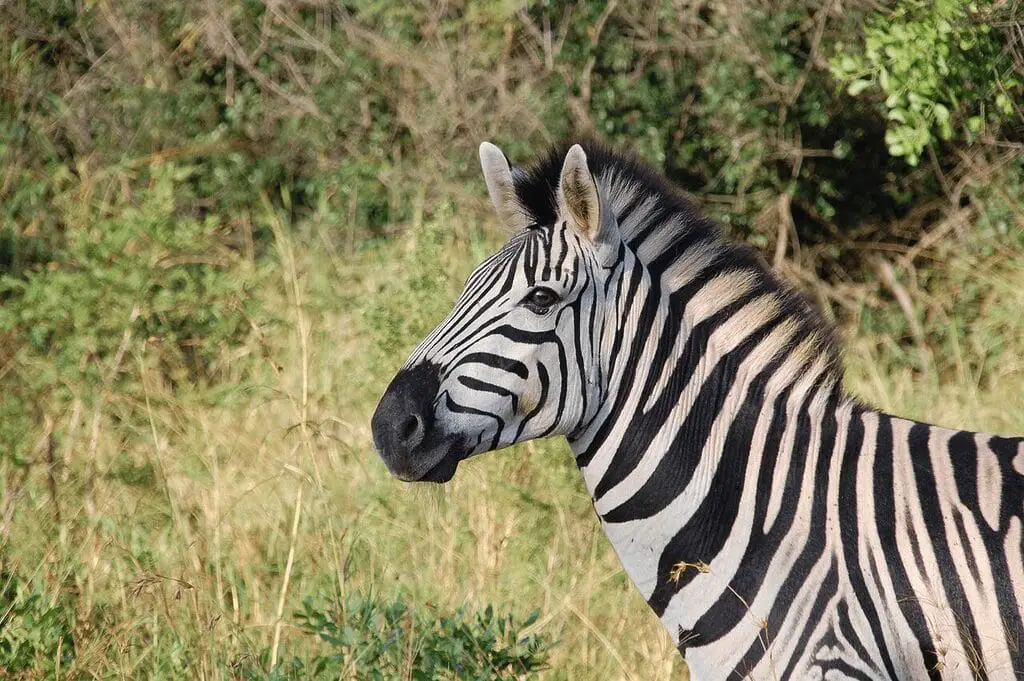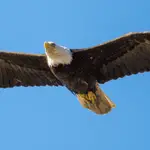Striped patterns in the animal kingdom, such as those found in Animals with Stripes, possess a universal appeal due to their multifaceted significance. These stripes offer effective camouflage by breaking up an animal’s outline, aiding in concealment across various environments.
Additionally, they play a crucial role in communication; variations in the width, color, or orientation of stripes can convey important messages related to dominance, mating, or serving as warning signals.
Additionally, stripes aid in individual identification, facilitating recognition within a species. This adaptive and versatile trait showcases nature’s ingenuity, emphasizing the essential role of stripes in the survival, communication, and social dynamics of countless species across ecosystems.
The Top 7 Most Strikingly Patterned Animals
The Regal Tiger and Its Iconic Stripes

The distinctive striped coat of tigers, characterized by bold black stripes against a rich orange background, serves crucial functions in their survival. These stripes act as a highly effective form of camouflage in dense vegetation, helping the tiger blend seamlessly into its surroundings while stalking prey.
During hunts, the stripes provide essential visual disruption, aiding in the stealthy approach towards unsuspecting prey. Furthermore, these unique patterns play a role in species recognition, enabling individual identification within the tiger population. The remarkable adaptation of stripes on a tiger’s coat exemplifies nature’s evolutionary prowess, contributing to their finesse as apex predators in their habitats.
Zebra Stripes: A Black and White Enigma

Zebras’ unique black and white striped patterns have long intrigued researchers. While the exact purpose of these stripes remains debated, prevailing theories suggest their role in deterring biting flies, with the high contrast disrupting insect vision and discouraging landings. This adaptation is particularly valuable in the African savannah, which zebras inhabit.
The stripes may also play a role in temperature regulation, reflecting sunlight and aiding in cooling. Additionally, the intricate stripe patterns contribute to social dynamics, facilitating individual recognition within the herd. The enigmatic zebra stripes thus showcase a combination of adaptive strategies for survival and communication in their natural habitat.
The Graceful Elegance of Striped Fish: The Clownfish
Clownfish, adorned with vibrant striped patterns, exhibit a remarkable adaptation for survival in coral reef environments. The bold contrasting stripes—typically in shades of orange, white, and black—serve a protective function. In the intricate and visually chaotic world of coral reefs, the stripes help camouflage clownfish among the anemones they inhabit.
This cryptic coloration provides a crucial shield against predators, allowing them to blend seamlessly with the surrounding coral. The stripes, therefore, play a pivotal role in the clownfish’s defense strategy, highlighting the intricate balance between adaptation and the vibrant ecosystems they call home.
The Sleek Elegance of the Jaguar
Jaguars, epitomizing feline elegance, boast a coat adorned with distinctive spotted rosettes, seamlessly blending into their forest habitats. Contrary to the common striped pattern seen in other big cats, jaguars exhibit a unique combination of both spots and occasional hidden rosettes that enhance their stealth during hunting.
Stripes, found in other big cats like tigers and leopards, serve diverse adaptations—from camouflage in varied landscapes to disruptive patterns aiding in surprise attacks. The evolution of stripes across big cat species underscores nature’s ingenuity, showcasing how these patterns contribute to their survival strategies and prowess as predators.
The Dazzling Zebra Longwing Butterfly
The Zebra Longwing butterfly stuns with its striking black and white striped wings, a masterpiece of nature’s design. Beyond aesthetic allure, stripes play a vital role in the evolutionary survival of insects. Mimicking warning signals, these stripes often indicate toxicity, deterring potential predators. Additionally, they aid in temperature regulation, camouflage, and species recognition.
In the intricate dance of evolution, the adaptive significance of stripes in insects transcends mere aesthetics, serving as a multi-faceted tool for communication, protection, and ecological balance in diverse ecosystems. The Zebra Longwing’s beauty is a testament to the functional elegance of nature’s patterns.
The Striped Marvels of the Okapi
The okapi, native to the dense Ituri Rainforest in Central Africa, possesses a captivating coat adorned with subtle, horizontal white stripes on its hindquarters, reminiscent of a zebra. This lesser-known but striking pattern provides a natural camouflage amidst the forest foliage. Despite its zebra-like appearance, the okapi is more closely related to giraffes, sharing their unique ossicones and long tongues. Okapis are known for their keen sense of hearing and distinct vocalizations, aiding communication in the dense vegetation where visual cues are limited.
These elusive mammals are highly adapted to their rainforest habitat, relying on their stripes for camouflage and silent movement to avoid predators like leopards. Okapis are also territorial, using scent glands on their feet to mark their territory. Unfortunately, the okapi faces threats from habitat loss and hunting, making their conservation crucial to preserving the biodiversity of the African rainforest.
The Allure of Striped Snakes: The California Kingsnake
The California kingsnake boasts a striking array of bold black and white stripes, an adaptation that serves both mimicry and defense in its habitat. This non-venomous snake exhibits Batesian mimicry, resembling the venomous coral snake, which shares a similar color pattern but with different arrangements. The kingsnake’s mimicry serves as a deterrent, fooling predators into perceiving a venomous threat and avoiding potential predation.
Furthermore, the bold stripes on the kingsnake contribute to its own defense. When threatened, it engages in a defensive behavior known as “bluffing,” where it coils tightly, vibrates its tail, and hisses loudly. The contrasting stripes draw attention to its coiled body, emphasizing the snake’s potential danger. This defensive display, coupled with its mimicry, showcases the intricate ways in which stripes function in the animal kingdom, not only as aesthetic features but as crucial elements of survival and protection.
- What Should I Do If A Koala Bites Me? Safety Guide - 2024-05-30
- Are Kangaroos Born Without Hind Legs? A Fascinating Journey - 2024-05-30
- Animals That Look Like Squirrels - 2024-05-30









